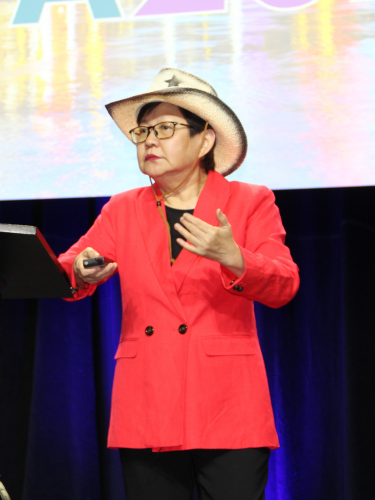Dr. Pearl Kwong’s Insightful Lecture on Pediatric Procedures and Patient Care
Pearl Kwong, MD, delivered a humorous lecture Saturday morning discussing pediatric procedures. She said children can be “uncooperative patients” and working with them can be daunting. It’s important to keep in mind when working with children, it is truly a family affair and therefore you need to understand the family dynamics of the patients with whom you’re working. A 2017 Pediatric Derm study identified factors which lead to satisfaction in a clinic visit with the most important factors found to be the patient provider relationship, cheerfulness of the practice and sensitivity to the patient’s needs. Dr. Kwong reports it is also key to maintain boundaries with these patients, for example, limiting the number of family members who participate in the patient’s appointment. Caregivers should know who each member of the medical team is and how they will be involved in any procedure.
She reviewed reasons for performing procedures on pediatric patients including biologic treatments, biopsies or excisions, wart treatment or curettage and application of medication. “Rashes in kids can be very challenging,” Dr. Kwong said noting it is imperative that providers don’t miss serious conditions such as genetic conditions, malignancies and autoimmune conditions. Further, biopsy should be considered in patients who have a chronic rash that is resistant to treatment.
Coverage: SDPA 21st Annual Fall Dermatology Conference, Oct. 25-29, 2023 in Nashville, Tennessee
Dr. Kwong reminded attendees all patients can be fearful including babies. Knowing the stages of baby development can help when interacting with these patients. Other helpful tips include examining babies on parent’s laps, letting the baby or kid touch or “play” with the medical equipment, including the child in the conversation and setting expectations to parents. Dr. Kwong urges providers to avoid certain terminology including “shot, prick or needle.” Additionally, praising the child for being brave can be helpful. Dr. Kwong prescribes EMLA for patients upon request for use prior to procedures; she never uses conscious sedation with her patients. When performing procedures on pediatric patients, she urges providers to avoid preparing a surgical tray in the room and to cover the tray as much as possible.
Finally, Dr. Kwong discussed appropriate referral of patients for procedures. Referral to a cosmetic surgeon may be in the best interest of a patient when the location is the face or other cosmetic unit or when the lesion or rash is close to important structures. Referring to a cosmetic provider may be the best option if parents are not confident in your care or if they do not agree with your recommendation. If patients or their parents are particularly anxious or they are overly concerned about scars despite explanation, referring to another provider may be the best solution for the patient. Furthermore, if parents do not agree with the treatment recommendation, it may be in the provider’s best interest to refer to another provider. Lastly, if the provider is at a risk of getting hurt performing the procedure, a referral may be needed.
Byline: Sarah B.W. Patton, MSHS, PA-C
Pictured: Pearl Kwong, MD
